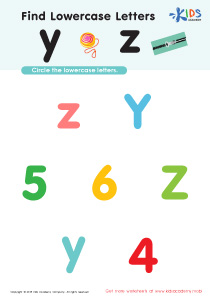Handwriting practice Normal Uppercase Letters Worksheets for Ages 6-9
6 filtered results
-
From - To
Enhance your child’s alphabet mastery with our "Handwriting Practice Normal Uppercase Letters Worksheets for Ages 6-9." Designed to build strong writing foundations, these printable worksheets guide young learners step-by-step through uppercase letter formation. Perfect for children aged 6 to 9, they emphasize proper stroke order, spacing, and consistency, ensuring neat and legible handwriting. Engaging activities make learning enjoyable, fostering confidence and fine motor skills. Ideal for home or classroom use, these educational resources support both individual practice and structured learning environments. Start your child’s journey towards flawless handwriting today with Kids Academy's expertly crafted worksheets!
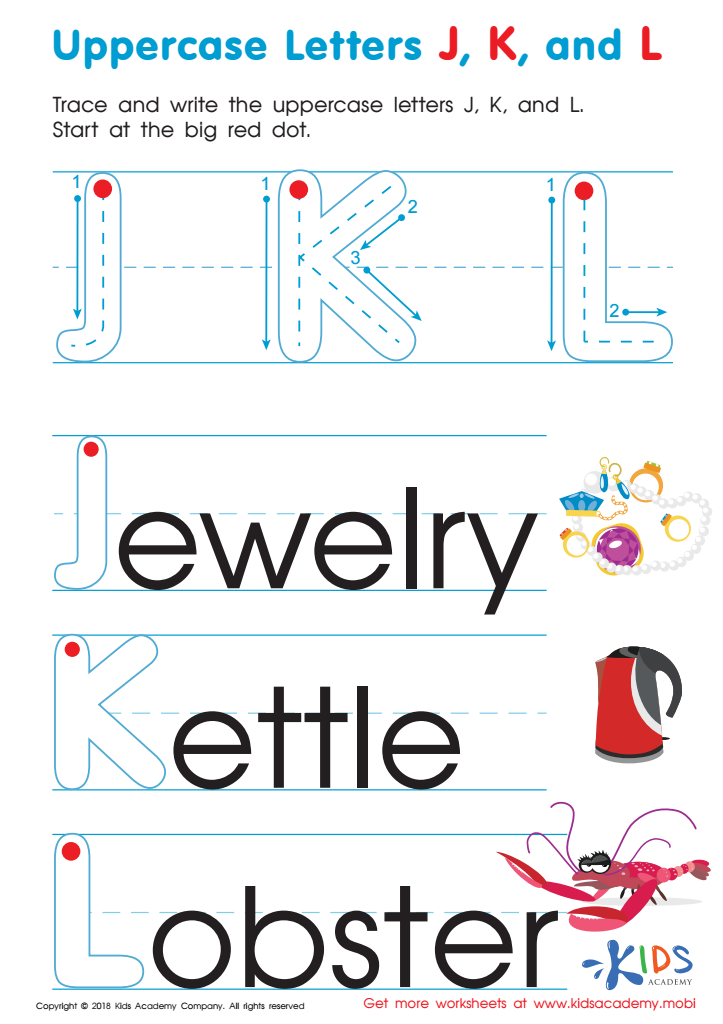

Uppercase Letters J, K, and L Worksheet
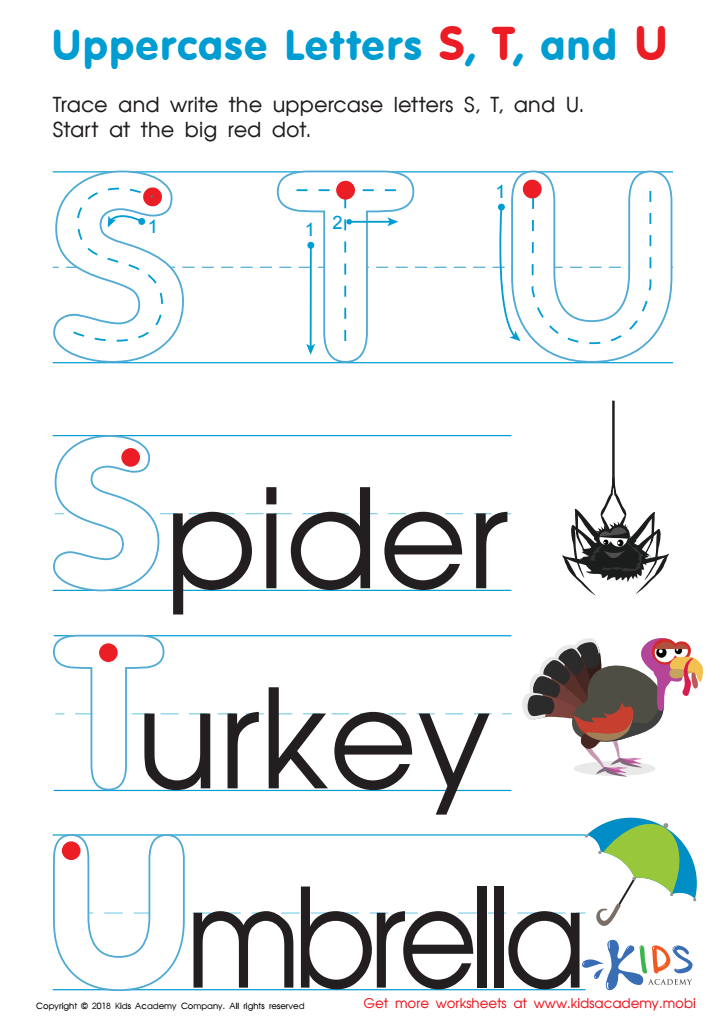

Uppercase Letters S, T, and U Worksheet
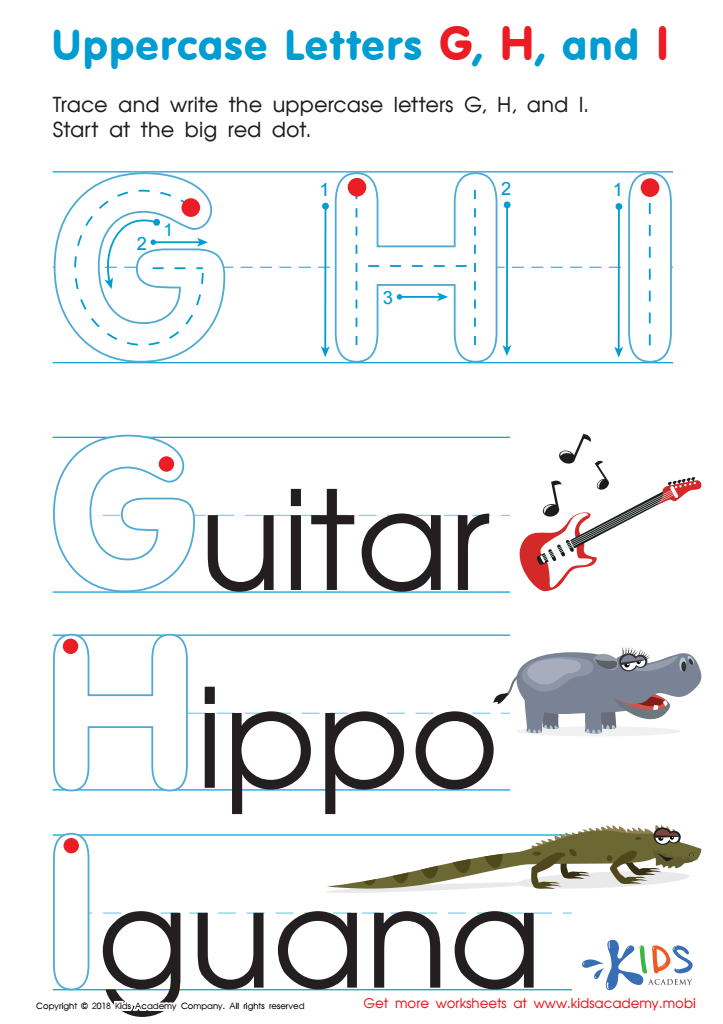

Uppercase Letters G, H, and I Worksheet
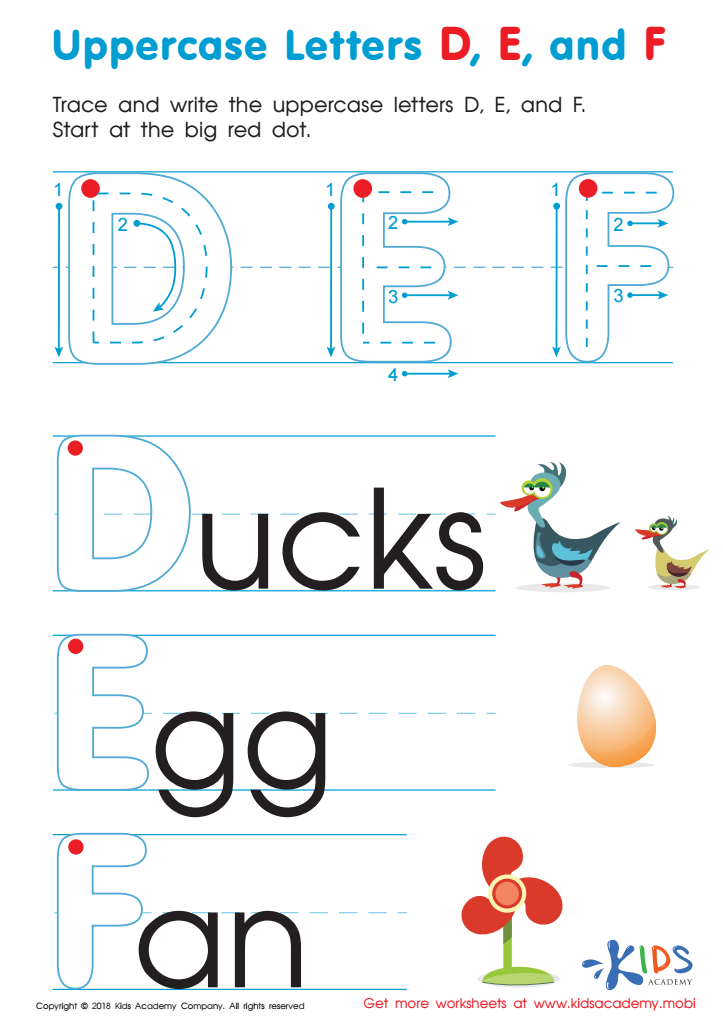

Uppercase Letters D, E, and F Worksheet
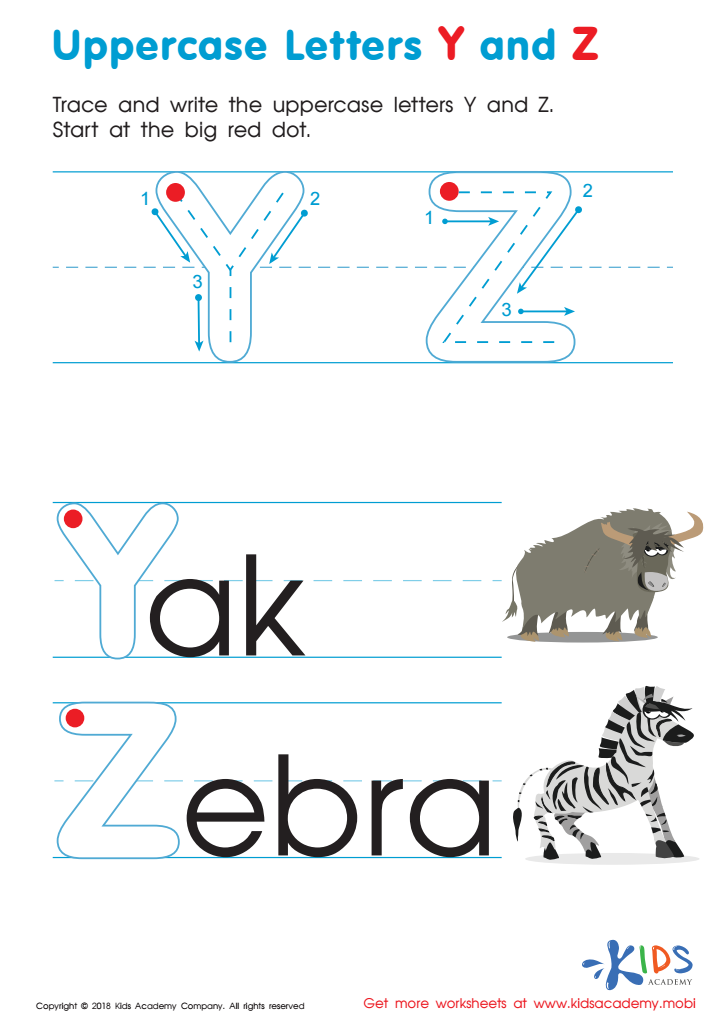

Uppercase Letters Y Z Worksheet
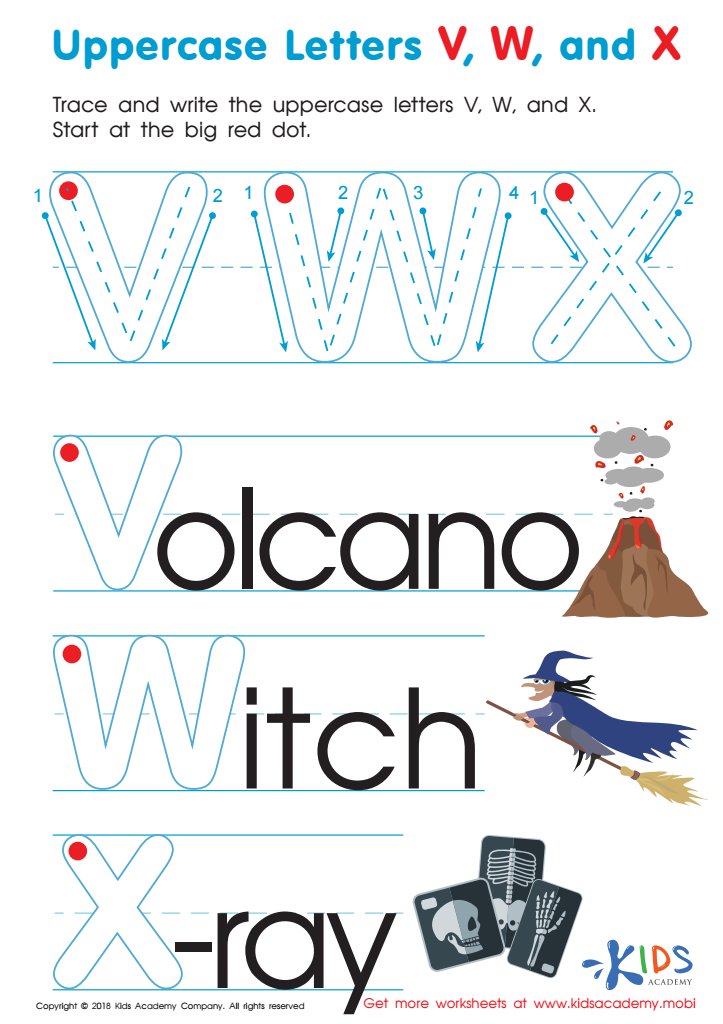

Uppercase Letters V, W, and X Worksheet
Handwriting practice, specifically focusing on normal uppercase letters, is crucial for children aged 6-9 due to multiple cognitive, motor, and academic benefits. At this developmental stage, fine motor skills are rapidly evolving, and practicing uppercase letters helps refine these essential skills. Uppercase letters are often simpler in form compared to lowercase letters, making them easier for beginners to master and build confidence.
Proficient handwriting helps establish a strong foundation for academic success. Clear, neat handwriting is essential for legibility, which directly affects the ability to communicate ideas effectively in written form. This is particularly important as children advance in school and take notes, complete assignments, and undertake tests.
Moreover, consistent handwriting practice enhances concentration and attention to detail, fostering discipline and a sense of accomplishment. The act of writing also aids memory retention, which is a key advantage across all subjects.
Additionally, good handwriting skills are linked to improved literacy; understanding the formality and correctness in letter formation encourages familiarity with reading and recognizing written words, thus boosting reading skills.
Parents and teachers play key roles in encouraging consistent practice to ensure these developmental milestones are met, aiding children in becoming competent, confident, and independent learners.
 Assign to My Students
Assign to My Students









